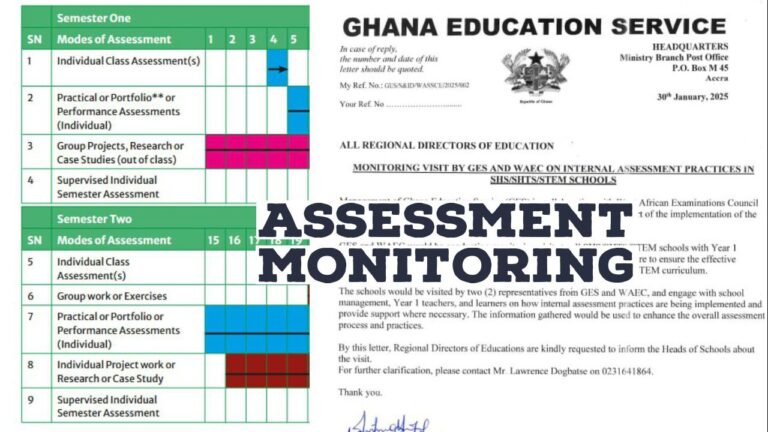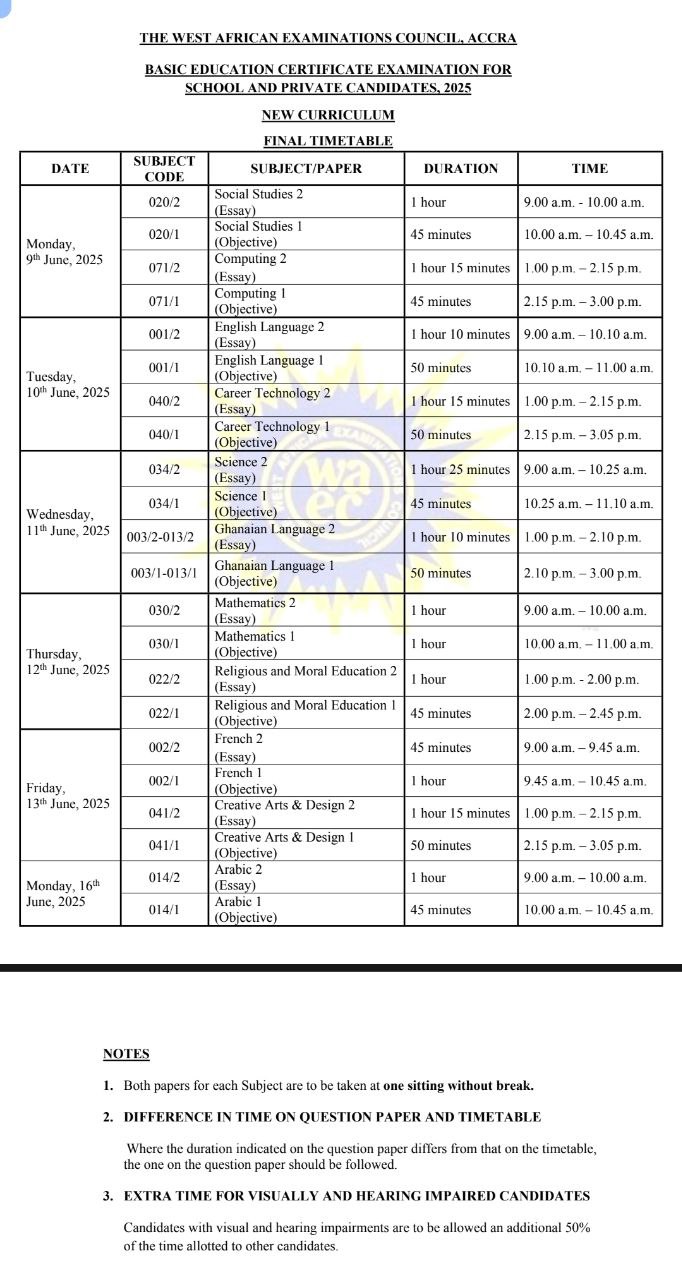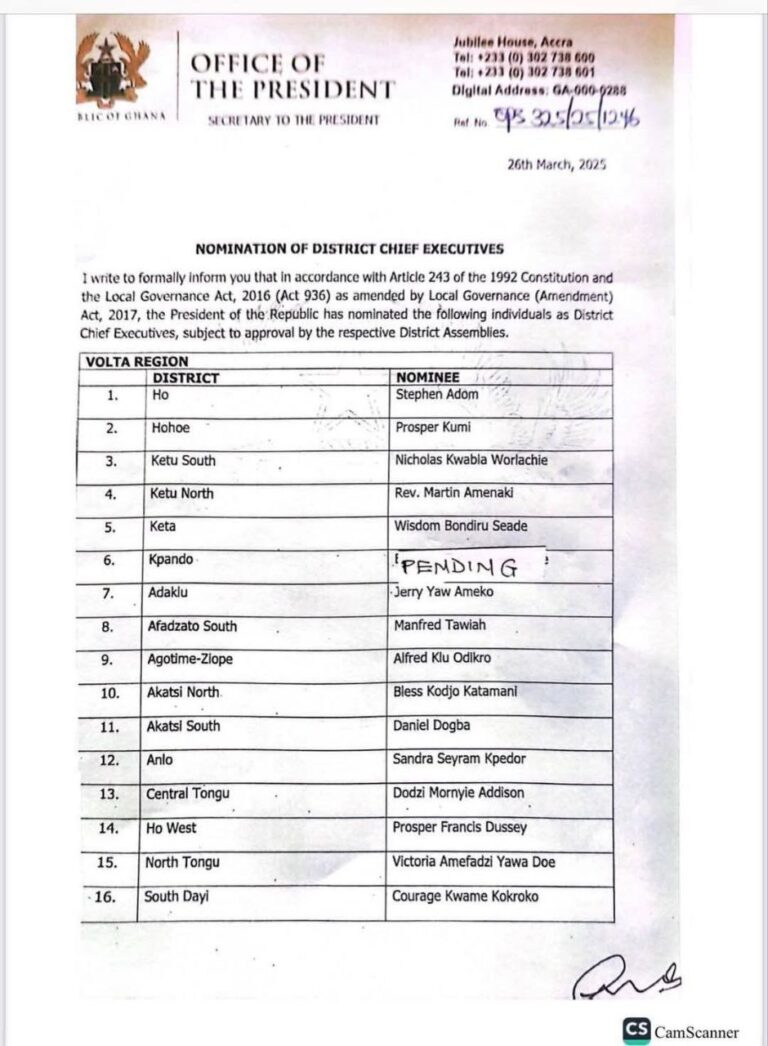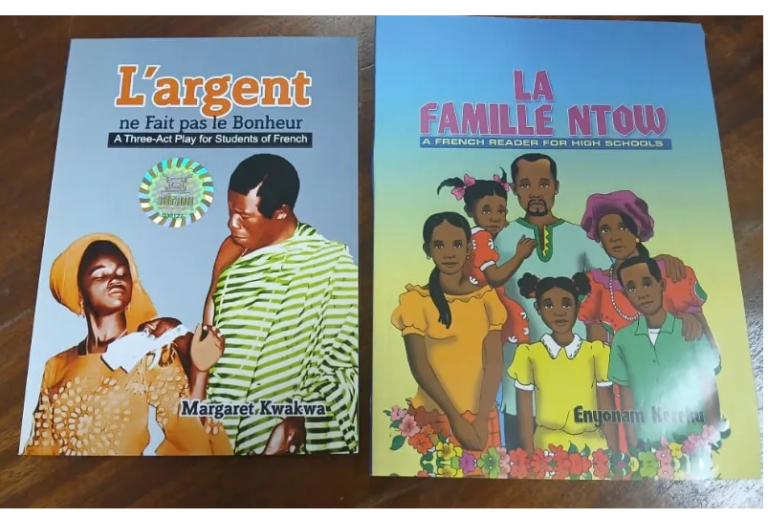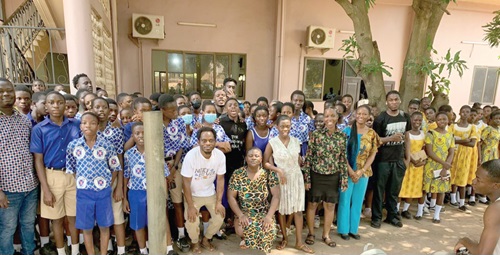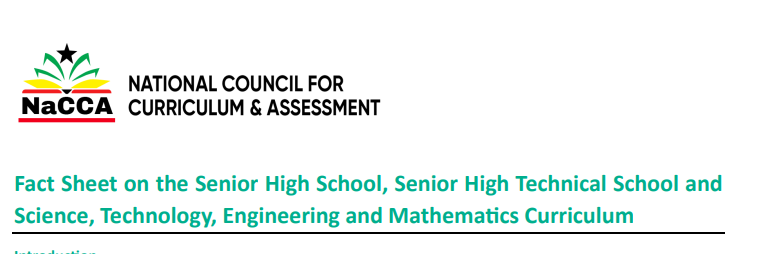
What is New in the SHS, SHTS and STEM Curriculum
Here are some of the New things from the Fact Sheet on the New SHS, SHTS, and STEM Curriculum
Learner-Centred Curriculum
The SHS, SHTS, and STEM curriculum places the learner at the center of teaching and learning by building on their existing life experiences, knowledge and understanding. Learners are actively involved in the knowledge-creation process, with the teacher acting as a facilitator. This involves using interactive and practical teaching and learning methods, as well as the learner’s environment to make learning exciting and relatable. As an example, the new curriculum focuses on Ghanaian culture, Ghanaian history, and Ghanaian geography so that learners first understand their home and surroundings before extending their knowledge globally.
Philosophy and vision for each subject
Each subject now has its own philosophy and vision, which sets out why the subject is being taught and how it will contribute to national development.
Promoting Ghanaian Values
Shared Ghanaian values have been integrated into the curriculum to ensure that all young people understand what it means to be a responsible Ghanaian citizen. These values include truth, integrity, diversity, equity, self-directed learning, self-confidence, adaptability and resourcefulness, leadership and responsible citizenship.
Integrating 21st Century Skills and Competencies
The SHS, SHTS, and STEM curriculum integrates 21st-century skills and competencies. These are:
- Foundational Knowledge: Literacy, Numeracy, Scientific Literacy, Information Communication and Digital Literacy, Financial Literacy and Entrepreneurship, Cultural Identity, Civic Literacy and Global Citizenship
- Competencies: Critical Thinking and Problem Solving, Innovation and Creativity, Collaboration & Communication
- Character Qualities: Discipline and Integrity, Self-Directed Learning, Self-Confidence, Adaptability and Resourcefulness, Leadership and Responsible Citizenship
Balanced Approach to Assessment – not just Final External Examinations
The SHS, SHTS, and STEM curriculum promotes a balanced approach to assessment. It encourages varied and differentiated assessments such as project work, practical demonstration, performance assessment, skills-based assessment, class exercises, portfolios as well as end-of-term examinations and final external assessment examinations. Two levels of assessment are used. These are:
- Internal Assessment (30%) – Comprises formative (portfolios, performance and project work) and summative (end-of-term examinations) which will be recorded in a school-based transcript.
- External Assessment – Comprehensive summative assessment will be conducted by the West Africa Examinations Council (WAEC) through the WASSCE. The questions posed by WAEC will test critical thinking, communication and problem solving as well as knowledge, understanding and factual recall.
The split of external and internal assessment will remain at 70%/30% as is currently the case. However, there will be far greater transparency and quality assurance of the 30% of marks which are school-based. This will be achieved through the introduction of a school-based transcript, setting out all marks which learners achieve from SHS 1 to SHS 3. This transcript will be presented to universities alongside the WASSCE certificate for tertiary admissions.
Teaching and Learning Resources
Subject associations, under the guidance of the Ministry of Education, Ghana Education Service and West African Examinations Council, are developing Learning Materials to be used in schools. These Learning Materials will be completed for Year One, for all 39 subjects, by September 2024.
In addition to these Learning Materials, Professional Learning Community (PLC) Handbooks, subject-specific Teacher Manuals, a teacher assessment guide and toolkits are being made available to teachers to help them implement the curriculum effectively. The first of these materials (PLC Handbooks) were introduced across all 700 SHSs and SHTSs from June 2023. We are confident that, with these materials and associated training, this is the most prepared that Ghanaian teachers have ever been for the roll-out of a new curriculum. A summary of the uses of these materials is provided below:
- PLC Handbooks: Designed to support teachers in organising weekly sessions to improve their knowledge, skills, and approaches to the delivery of the curriculum.
- Subject-Specific Teacher Manuals: Containing all the content, pedagogy, and assessment information needed by teachers to plan and deliver their lessons effectively each week.
- Microsite: The Ministry of Education has developed a Zero-Rated website to host teaching and learning resources for teachers and learners to use. All of the materials mentioned above will be placed on this microsite. Teachers and learners can access the site free of charge without using their internet data.
An Inclusive and Responsive Curriculum
The SHS, SHTS, and STEM curriculum ensures no learner is left behind, and this is achieved through the following:
- Addressing the needs of all learners, including those requiring additional support or with special needs. The SHS, SHTS, and STEM curriculum includes learners with disabilities by adapting teaching and learning materials into accessible formats through technology and other measures to meet the needs of learners with disabilities.
- Incorporating strategies and measures, such as differentiation and adaptative pedagogies ensuring equitable access to resources and opportunities for all learners.
- Challenging traditional gender, cultural, or social stereotypes and encouraging all learners to achieve their true potential.
- Making provision for the needs of gifted and talented learners in schools.
Social and Emotional Learning
Social and emotional learning skills have also been integrated into the curriculum to help learners to develop and acquire skills, attitudes, and knowledge essential for understanding and managing their emotions, building healthy relationships and making responsible decisions.
|
Subject Combinations
The SHS, SHTS, and STEM curriculum introduces flexibility in subject selection to enable learners to choose between a total of 7 and 9 core and elective subjects. BECE will continue to be the exit examination for Junior High School (JHS) leavers.
JHS graduates entering Senior High School (SHS) will choose general ‘learning areas’ such as General Arts, Science, Languages, STEM, Applied Technology, Home Economics, Business Studies, and Arts. Once they are placed in schools, learners will have much more freedom than is currently the case to combine different subjects around their chosen learning area. This provides learners with more flexible options to pursue different career options.
To ensure flexibility, certain programmes, such as Home Economics and Business Studies, individual subjects have been merged into one subject. The new subjects cover all the key learning areas under the previous programmes. Learners will now be able to take these subjects and combine them with others which would not have been possible before. Home Economics now covers Management in Living, Clothing and Textiles, and Food and Nutrition while Business Studies covers Business Management, Cost Accounting, and Financial Accounting.
Additionally, Visual Arts has been divided into two distinct subjects: Arts and Design Studio and Arts and Design Foundation. Arts and Design Studio covers Painting, Textiles, Ceramics, Sculpture, and Graphic Design, while Arts and Design Foundation focuses on fundamental principles of art design.
Furthermore, two new subjects have been introduced. Applied Technology covers Automotive Technology, Building Construction Technology, Electrical and Electronics Technology, Metal Technology, and Woodwork Technology. Meanwhile, Design and Communications Technology (Technical Drawing) equips students with essential skills, knowledge, and competencies applicable to Applied Technology, Arts and Design, Home Economics, and Engineering. This subject encompasses conceptual drawing including free hand sketches, graphic communications, and extended drawing.
The new SHS, SHTS, and STEM Curriculum address content overload by reviewing the scope of each subject, eliminating duplications, and identifying relevant themes.
- Learners are expected to select a minimum of 7 (4 core and 3 electives) and a maximum of 9 subjects (4 core and 5 electives) for the three-year.
- Every learner is required to select FOUR (4) core subjects: Social Studies, English Language, Mathematics and Science, or Art and Design Foundation, depending on their choice of elective subjects. In addition, there are three school-based core subjects from which learners can choose. These school-based subjects are Religious and Moral Education (RME), Physical Education and Health (PEH), and Information and Communication Technology (ICT)
- Intervention Subjects – (Intervention English and Intervention Mathematics) have been developed to assist learners who require additional support in literacy and numeracy. Schools would conduct an initial assessment to identify the learning needs of newly admitted learners for appropriate support.
Source; NaCCA

